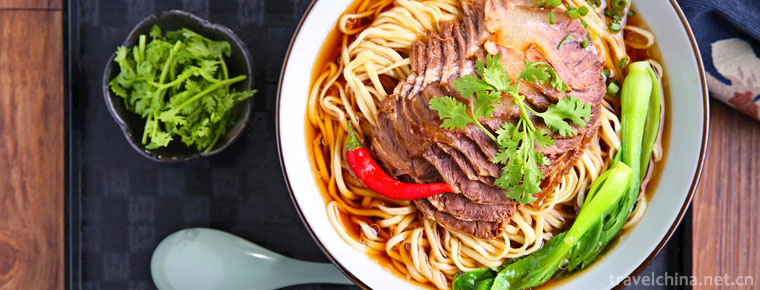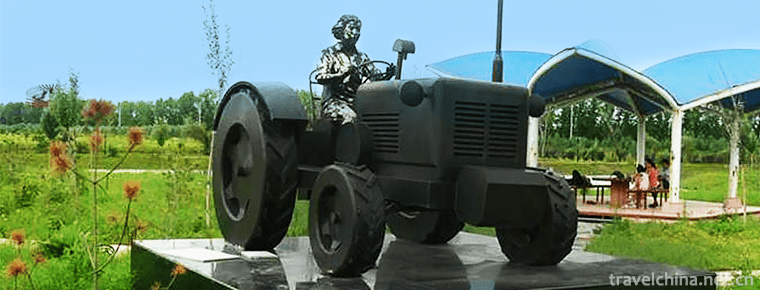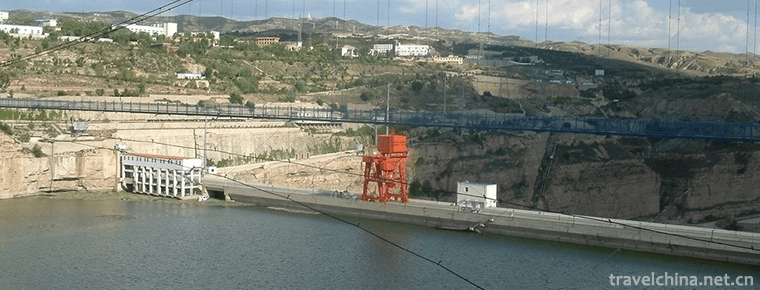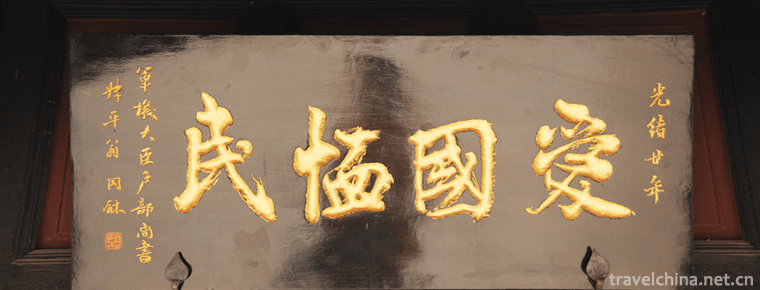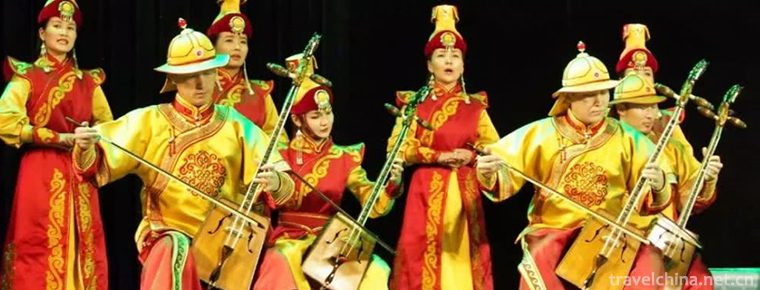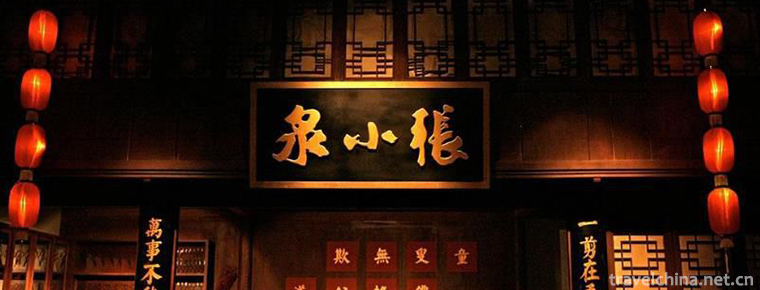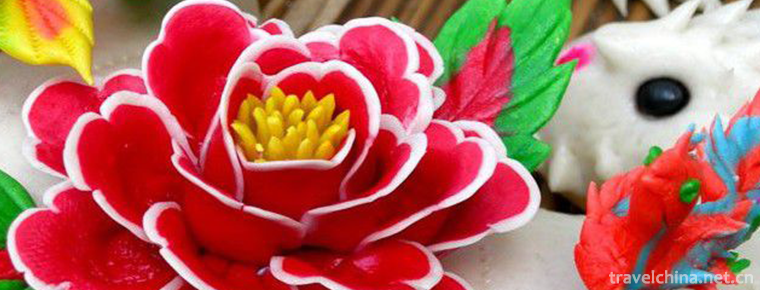Really Different zhenbutong Making Skills of Luoyang Watermat
Really Different zhenbutong Making Skills of Luoyang Watermat
It's really different from Luoyang's water mat making skills. The traditional handicraft in Luoyang City, Henan Province, is one of the national intangible cultural heritages.
Truly different Luoyang water mat began in the Tang Dynasty and flourished in the middle and late Tang Dynasty. After the Song Dynasty, the water mattress in Luoyang gradually lost its popularity.
On June 14, 2008, different techniques of making water mats in Luoyang were selected into the second batch of national intangible cultural heritage list, project number_-173.
historical origin
Luoyang Watermat was formed in the Tang, Wuzhou and Zhou Dynasties. It appeared in the process of Chinese Dietary Custom changing from separate food system to joint food system. Before the Tang Dynasty, banquets were mostly held by one person or several units. After the emergence of the joint food system, it became a form of banquet surrounded by many people. The banquet culture also changed qualitatively with the change of the banquet form. The water banquet in Luoyang was one of the Royal banquets formed during this period. Historically, it was called "the style of the Tang Dynasty". Today, the form of Chinese banquet was inherited from that time.
A remnant tablet unearthed from the site of Tang Mingtang has the following words: "Dinner for soup, precious feast for Shuicuoshan, foreign envoy for Wuhuang banquet..." This is the earliest record of the water mat in Luoyang. In the Song Dynasty's Yixianlu, there is "the seat of Emperor Wu, running clouds and running water..." And describes the "water mat" eating etiquette. Shao Yong of Song Dynasty, who lived in Luoyang and was known as an euthanasia resident, wrote in his poem after a banquet at Sima Guangdu Paradise: "The clouds float down the Kunlun Ointment and the water carries the undersea stars. Twenty-four years of merits and demerits, 89 autumn right and wrong mix..." This is the image description of the water feast in Song Dynasty. Twenty-four dishes of water mat are related to Wu Zetian's twenty-four years'merits and demerits. In the Ming Dynasty, Zhu Changxun, the king of fortune, feuded Luoyang with extravagance and great desire. "Marriage fee is 300,000 yuan, Yingluoyang residence is 280,000 hectares", "drinking alcohol in the closure of the courtyard, only women advocate happiness", "Beijing can not be without, Luoyang can not be without"... The water feast feast in Fuwang Palace is the predecessor of today's "Luoyang water feast".
In 1897, Bai Jingzhai, a chef in Zhaofu, Luoyang, discovered a "water mat recipe" handed down by his ancestors. Bai Jingzhai was the seventh grandson of Baibeishan, one of the chefs in the dining room of Fuwang House in Ming Dynasty. Baijia has been cooking for generations since Ming Dynasty. Therefore, there are copies of famous dishes and banquets in Fuwang House. One of them is the water table recipe. According to this spectrum, Bai Jingzhai launched a water mat, which was quickly recognized in the government and the market. It was known as "Luoyang official mat" and became popular in urban and rural areas of Luoyang. The name of Luoyang water mat was officially confirmed. Bai Jingzhai was also honored as "King of Luoyang water mat". After Bai Jingzhai's death, because of his childlessness, his son-in-law was bored with Bai's true biography and opened a "restaurant at home" to manage water tables. He had been specializing in the production of water tables in the Royal Palace of Luoyang in Cixi, the headquarters of Yuan Shikai and Wu Peifu's home, which made Luoyang water tables famous at that time and became the only choice for holding banquets in Luoyang.
The operation of the water mat in Luoyang was once interrupted. In the 1950s, the government of Luoyang resumed the supply. In the late 1990s, different hotels merged into Luoyang Restaurant Group, and the water mat of Luoyang was replayed brilliantly.
Technological characteristics
Really different seats are unique local flavor dishes in Luoyang, Henan Province. They are unique in flavor, exquisite in material selection, careful and delicate in cooking, delicious and diverse in taste, comfortable and refreshing in taste, and are deeply loved by the vast number of consumers. There is a saying among the people that "not really different, not to Luoyang City". Luoyang watermat, Longmen Grottoes and Luoyang peony are also known as "three wonders of Luoyang".
Luoyang water mat is not only a set dish, but also a set taste. Twenty-four dishes of Luoyang water mat are different. They change according to the taste, appetite and interest of people. The whole table down, sour, sweet, bitter, spicy, salty, hemp, clear, refreshing... It's just right not to be messy.
Technological process
Luoyang Water Banquet is feasted on strict formulas and fixed specifications. It has 24 dishes, namely eight cold dishes, four large dishes and four table-pressing dishes. The serving procedure is as follows: first, four meat, four vegetable and eight cold dishes are placed on the table, then four main dishes are served, and each one is served with two Chinese dishes, which is called "Tape Up". The fourth dish was served with beet soup, followed by staple food, followed by four table-pressing dishes, and finally a "send-off soup". Twenty-four dishes with soup, remove the front dish and then the back dish, and then proceed in turn, the rules are orderly, without any confusion.
Baliangcai
"Clothing": Egg-yolk as a ready-made eggshell tied to vegetables, egg-coat thin as paper, golden yellow without miscellaneous, eating red and green silk on the eggshell decorated with dragon and Phoenix patterns, which also means that the emperor's yellow robe added body.
"Ritual": go to the deer tendons, like a bow, (there are other materials instead of) look white and shiny, placed in an orderly dish, reflecting the courtesy of courtesy.
"Tao": Roll up the fragrant stuffing with five fragrant rot sheets (with earthy ears and fungi from the argyrophytes on the Bank of Luohe River after rain. Local dialect is called "geosphere" best. Outside does not know its inside, inside does not know its taste, eats in the mouth to have the indescribable delicacy.
"Desire": Take three-year-old dog waist flower cut into slices, open in the middle, nested cock waist for shape, decorated with wolfberry, with Cordyceps sinensis, to see the brilliant, strong Yang of food to fill deficiency.
"Art": In the past, it was prepared with crisp lotus and sparrow tongue. The lotus is picturesque and the bird sings in spring, which means that the lotus is picturesque and the song and dance are elevated to the level. Of course, to protect birds, the tongue has been replaced.
Wen: Cook carp mustache with green bamboo shoots. Bamboo shoots are the soul of bamboo, bamboo is the literary friend, and Wencheng is the principle of the world (carp).
"Zen": Wu Zetian was a monk. He was related to Buddhism and Zen. This dish is vegetable and free from oil and meat.
"Zheng": Made of goose preserves and goose paws. The goose knows the cold and warm and migrates, while the goose's paw floats. It is a metaphor for the regime to know that the world is cold and warm, and that public opinion is overwhelming. Goose preserves have been replaced by goose preserves.
Four Town Table
1. Yancai, which is called "Peony Yancai" in Luoyang area. Because in October 1973, Premier Zhou Enlai accompanied Canadian Prime Minister Trudeau on a tour of Luoyang, where the leaders of Luoyang hosted at a water mat. Celebrity chefs crafted a peony flower with eggs and put it on the swallow. Premier Zhou was very happy to see it and said, "Luoyang peony is the best in the world, and peony flowers are also in the dishes." Since then, Yancai has been renamed "Peony Yancai".
2. Scallion-stewed tiger-head carp, carp to the Mengjin Yellow River produced by the long-bearded carp as the top-grade, disguised as open mouth and flutter on the head. The head of a fish must be a respectful person, an elder or a distinguished friend on the table. A person sitting on the table first moves his chopsticks to show respect and courtesy.
3. Cloud-covered Sufu meat. The person sitting down first moves chopsticks. According to legend, Wu Zetian's four sons made her dissatisfied, but she was very appreciative of Princess Taiping. Later, Taiping married Xue Shao as his wife. When he sent his daughter to marry, Wu spread his milk on the flesh and asked her to eat it, so that her daughter could not forget her heart.
4. Haimi rose to a variety of colors, that is, stewed cabbage with Haimi, called "Baicai" for a lucky and pleasant picture. Chinese cabbage is sometimes vegetarian, but it is for the sake of the first two meat dishes.
Eight Major Parts
"Eight big pieces" are divided into the first five and the second three.
The first five are "Quick Three Samples", "Five Salix Fish", "Fish Kernel", "Chicken Ding" and "Exploded Crane Preserved".
The latter three are three sweets, usually eight treasure rice, sweet silk drawing, sweet and sour ribs.
Four sweeps of the tail
The order is "Shark Fin Flower Arrangement", "Golden Monkey Exploring the Sea", "Opening Squid for Spring", "Bibo Umbrella Pill".
Inheritance and Protection
Inheritance value
Luoyang Water Banquet is not only unique in style and unique in China, but also has profound cultural connotation and complete cultural context. The whole banquet has a unique ceremony and exquisite, each dish has a unique story, the history of dishes is in harmony, its interesting nature, compared with some feasts characterized by luxury, the water table also has a higher practical value and promotion value.
Current situation of inheritance
With the impact and integration of the market economy tide on the hotel industry, the Chinese and Western catering industry entered Luoyang in a large scale and competed for the Central Plains. The traditional water mat in Luoyang was impacted unprecedentedly. In the multi-cultural era, the general impetuosity of consumers, the strong influence of several major cuisines and the infiltration of seafood into the mainland, the change and loss of the original seafood chefs, etc., make Luoyang seafood, a banquet culture made with rigorous traditional skills, facing a crisis and in urgent need of social support and care.
Heritage figures
Yao Yanli, male, Han nationality, born in Gongyi City, Henan Province in August 1949. In June 2009, Yao Yanli was selected as the representative successor of the third batch of state-level intangible cultural heritage projects, which was declared by Luoyang City, Henan Province.
protective measures
In order to inherit and develop the seating culture, Luoyang Culinary Association has organized two times in recent years the national, provincial and municipal culinary experts and some famous chefs to gather in Luoyang to discuss the development of seating. The catering industry in Luoyang has also made a useful attempt in this regard.
On the basis of inheriting the traditional cooking skills of water mat, the 100-year-old shop "True Difference" has reformed the varieties of water mat in Luoyang. It has developed such dishes as "spicy fish fillet", "fried eight treasures rice", "sweet wine mountain drought", "raw dried balls". It has added seafood, turtle, snake soup and other raw materials to make the water mat in a high grade. It has improved a lot.
On December 08, 2014, Luoyang Restaurant Co., Ltd. (really different water mats in Luoyang) was selected as the provincial demonstration base for the productive protection of intangible cultural heritage.
social influence
international repercussions
On October 14, 1973, Canadian Prime Minister Trudeau visited Luoyang. The government of Luoyang hosted a meal at a really different water table in Luoyang and was appreciated.
Important activities
On September 22, 2012, the 2012 Heluo Cultural Forum, the first Yiyin Cultural Symposium, co-sponsored by the Chinese Traditional Culture Promotion Association and the Municipal Social Science Federation, was held in Luoyang City. The different techniques of making water mats in Luoyang were discussed at the symposium.

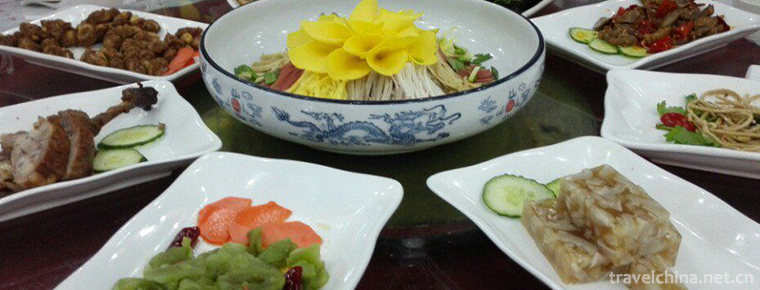
-
Beef noodle
Beef noodle is a common pasta. It is also a traditional food in Lanzhou.
Views: 286 Time 2018-10-12 -
The Great Northern Wilderness Agricultural Expo
Beidahuang Agricultural Machinery Expo Park is a national AAAA-level tourist attraction located in Youyi County, 50 kilometers away from the city center, covering an area of 350,000 square meters..
Views: 175 Time 2018-12-26 -
Wanjiazhai Water Conservancy Scenic Area of the Yellow River
Wanjiazhai Water Conservancy Project is located in the canyon of the north main stream of the Yellow River from Toketo to Longkou. It is the first of eight cascades planned and developed in the middle.
Views: 230 Time 2019-01-18 -
Mars Manor Scenic Spot
Ma's Manor, located in Xijiang Village, 20 kilometers west of Anyang City, Henan Province, is the mansion of Ma Piyao, governor of Guangdong Province in the Qing Dynasty..
Views: 144 Time 2019-02-06 -
Asil Lysi
"Asr" is the abbreviation of "Asru Winder" in Mongolian, and its translation is of great significance. Asr is a kind of Mongolian court music, which has a unique national style and.
Views: 217 Time 2019-03-28 -
Scissors Forging Technology
Zhang Xiaoquan scissors forging technology, local traditional handicraft in Hangzhou, Zhejiang Province, one of the national intangible cultural heritage..
Views: 131 Time 2019-05-05 -
Dough Flowers
Flower, commonly known as "flower bun", belongs to the art of facial sculpture. There are weddings, funerals, birthday gifts, Festival buns. Flowers are made of ordinary flour and special fl.
Views: 97 Time 2019-06-05 -
Naxi Dongba Painting
Naxi Dongba painting is an important part of Naxi Dongba culture and art, which is spread in the ancient city area of Lijiang City and Yulong Naxi Autonomous County of Yunnan Province. During the ritu.
Views: 135 Time 2019-06-07 -
Leshan water resources
There are many rivers in Leshan City, including Minjiang River, Dadu River, Qingyi River and many small and medium-sized rivers. It is a water rich area with an average annual water production of 11.37 billion cubic meters. With 74.14 billion cubic meters .
Views: 54 Time 2020-12-17 -
Meishan population
At the end of 2019, the total registered residence population was 3 million 422 thousand and 600, of which 1 million 194 thousand and 900 were urban population. At the end of the year, there were 2.995 million permanent residents, including 1.433 million urban.
Views: 333 Time 2020-12-18 -
Historical evolution of Yibin
In the sixth year of Jianyuan (135 B.C.), Emperor Wu of Han Dynasty established Qianwei County, and at the beginning of the county administration, he (the west of Zunyi City, Guizhou Province) was established. In the first year of the first Yuan Dynasty of emperor Z.
Views: 375 Time 2020-12-18 -
Cultural undertakings in Guangan
As of 2019, there are 5 radio and TV stations and 2 Radio and TV stations in Guang'an City. The comprehensive coverage rate of broadcasting is 99.7%, and that of television is 99.8%. There are 7 public libraries, 21 theatres and theatres, 4 museums an.
Views: 329 Time 2020-12-19
